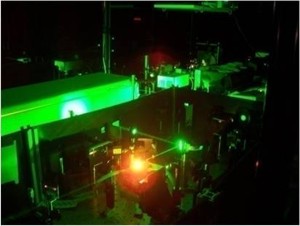 I read somewhere that someone said Mary Eberstadt’s book, a collection of satirical letters to the upper echelon of atheists about how not to argue if they want to get some more converts to atheism … I read somewhere that someone said this is not the way to convert. This is not the way to win your argument. That her satire is shallow. And as I read her book I wonder if she’s not exposing the shallow arguments of the new atheists by giving them a taste of their own medicines.
I read somewhere that someone said Mary Eberstadt’s book, a collection of satirical letters to the upper echelon of atheists about how not to argue if they want to get some more converts to atheism … I read somewhere that someone said this is not the way to convert. This is not the way to win your argument. That her satire is shallow. And as I read her book I wonder if she’s not exposing the shallow arguments of the new atheists by giving them a taste of their own medicines.
What’s the best in atheist art and aesthetics? What aesthetic legacy does Soviet communism leave us? [I will delete comments that simply try to insult Mary Eberstadt. The issue here is art and aesthetics, and the claim that such an aesthetic is connected to “something more.”]
Anyway, The Loser Letters is clever fiction; it’s satire, and it takes on some angular issues in a way that will gain attention. Some atheists are upset with her, tossing out all kinds of barbs about her style and her grasp of the issues, and I have to ask this: And you think Dawkins is serious philosophy or theology? Or that Hitchens’ angry vituperations are good arguments? Or Sam Harris’ analysis of history and religion is accurate? Try on D.B. Hart’s Atheist Delusions: The Christian Revolution and Its Fashionable Enemies
is clever fiction; it’s satire, and it takes on some angular issues in a way that will gain attention. Some atheists are upset with her, tossing out all kinds of barbs about her style and her grasp of the issues, and I have to ask this: And you think Dawkins is serious philosophy or theology? Or that Hitchens’ angry vituperations are good arguments? Or Sam Harris’ analysis of history and religion is accurate? Try on D.B. Hart’s Atheist Delusions: The Christian Revolution and Its Fashionable Enemies
. That’s some serious reflection on history. I myself examined why it is that folks walk away from the faith, why it is that some of these become atheists (Finding Faith, Losing Faith: Stories of Conversion and Apostasy
), and I would contend that Eberstadt pushes back exactly in the way the new atheists do. And I thinks she touches on sensitive topics and that are rarely broached.
. That’s some serious reflection on history. I myself examined why it is that folks walk away from the faith, why it is that some of these become atheists (Finding Faith, Losing Faith: Stories of Conversion and Apostasy
), and I would contend that Eberstadt pushes back exactly in the way the new atheists do. And I thinks she touches on sensitive topics and that are rarely broached.
Letter 4 addresses a keen topic: art. Who’s done the great art in the world? Why? She’s almost taunting them to put forth their best stuff and compare it to “their” best stuff.
Believers or non-believers? Christians or atheists?
She calls this the issue of “Dull achievement” (54). They, the Dulls (satire for Believers in God), have accomplished much when it comes to art. Architecture, music, sculpture, painting, literature, philosophy and the aesthetic life. The infuriating claim for the Brights is that the Dulls see their achievements as inseparable from their faith. It’s unmatched, the author tells the upper echelon of atheists, especially when compared to the Communist Secular stuff, their drama and architecture and sculpture.
St Mark’s Basilica in Venice, Notre Dame in Paris, the Duomo of Milan, St Paul’s in London… the Divine Comedy and music and paintings and… and … and… on and on. She says atheists aren’t sensitive enough to beauty and sublimity.
So her advice: don’t get into this argument. The Brights can’t win it. George Weigel says it comes down to Notre Dame in Paris vs. La Grande Arche a la Defense. What ideas are embodied here? What inspirations does it lead to?
What, she says to her atheist friends, do we offer? The Brooklyn Museum of Art? Elton John?

